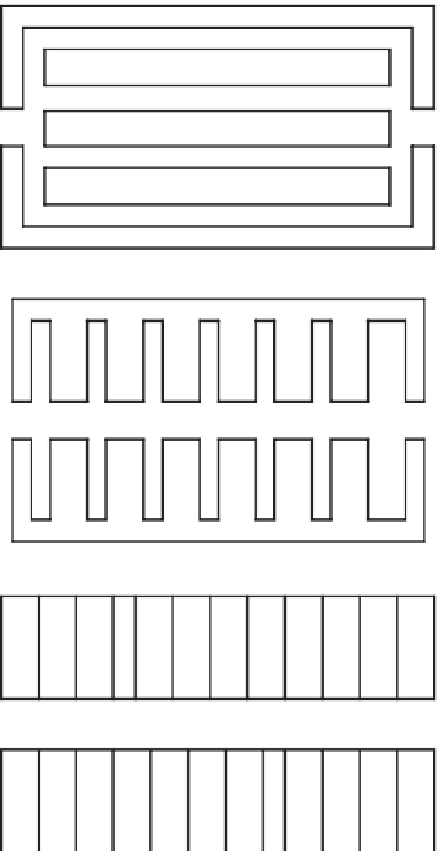Agriculture Reference
In-Depth Information
be made is calculated, the controllers
can be progressive or non-progressive.
In the non-progressive controllers,
only two options are available, on/off.
Progressive controllers can be of sev-
eral types: proportional control (P),
proportional integrated control (PI)
and proportional integrated derivative
control (PID), depending on the type
of action on the equipment that is
regulated.
Greenhouse control systems use the
Passage
Longitudinal
•
different types of regulators mentioned.
The control can be feedforward, when
it acts preventing the future values of
the parameter regulated, or by feedback,
when it only acts in response to the
measured values. In the control of a
process both can intervene (feedfor-
ward and feedback).
There are different types of models,
Passage
•
Peninsular
which are simplified representations of
a system or of a part of a system. In
greenhouses, we may distinguish two
types of models: (i) physical models,
related to the microclimate of the green-
house depending on the outside cli-
mate; and (ii) physiological models,
which focus on the plants and their
relations with the microclimate.
Simulation models are of great use, if
Moveable passage
•
they are well conceived and validated,
to simulate several real situations at a
low cost. The models constitute a use-
ful tool in the research of the physical
medium of the greenhouse and the
growth and production of the crop.
Nowadays, greenhouse climate control
Semi-mobile rolling trays
Fig. 12.6.
Usual arrangement of the passages in
a greenhouse, for crops planted at high density
or grown on elevated tables (longitudinal or
peninsular arrangements). The semi-mobile rolling
trays arrangement is used on elevated tables.
•
based on simple models is usual in
well-equipped greenhouses.
The use of climate control computers in
•
12.4
Summary
greenhouses is more and more usual,
and they may be independent or coor-
dinated with the fertigation control.
A greenhouse climate digital control
•
The regulation of any parameter (tem-
•
perature, humidity, CO
2
) consists of
comparing the measured value of the
parameter with a threshold value and,
if there is a difference between them,
operating equipment (heating, ventila-
tion) to decrease this difference.
Regulation can be manual or automatic.
system is composed, basically, of: (i) a
controller (the climate computer);
(ii) correction equipment (heating, ven-
tilation); and (iii) sensors to measure
the parameters to be regulated.
Each greenhouse has specific control re-
•
•
quirements, depending on its equipment
Depending on how the correction to




